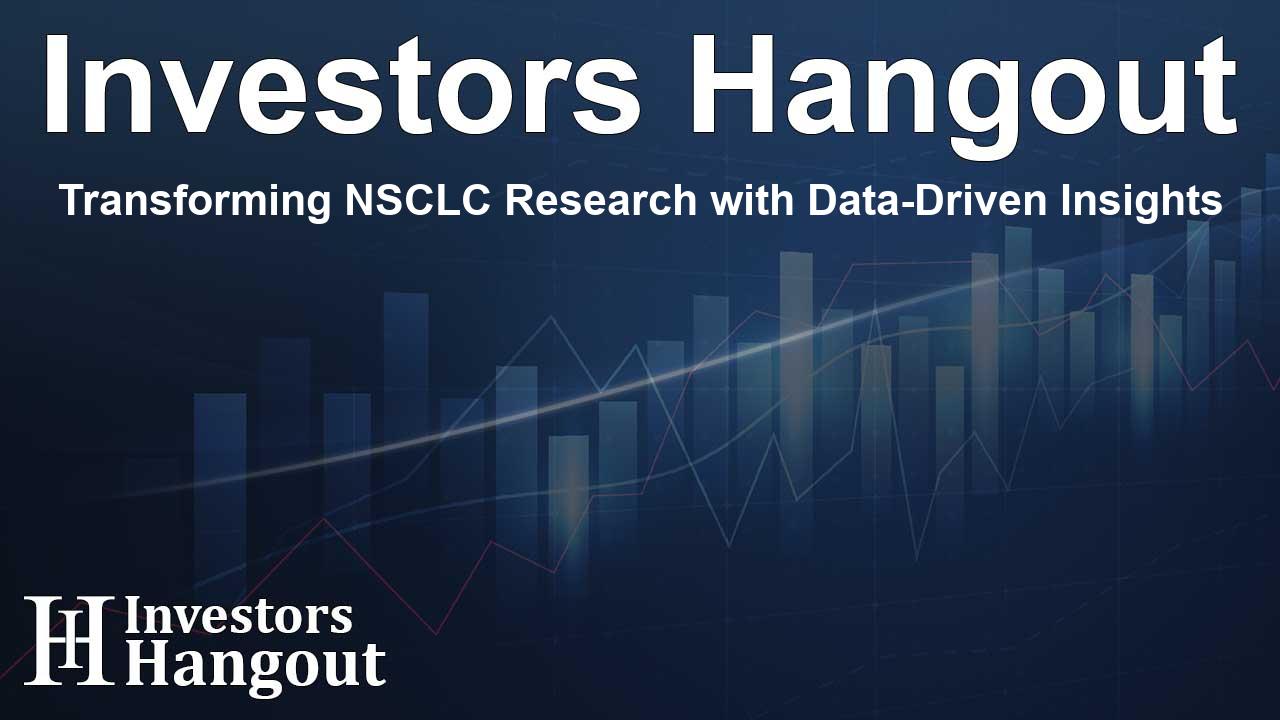Transforming NSCLC Research with Data-Driven Insights

Revolutionizing NSCLC Epidemiology Forecasting
In the ever-evolving field of oncology, precision stands as the foundation for groundbreaking advancements. A prominent biopharma company focusing on non-small cell lung cancer (NSCLC) turned to DelveInsight, a respected name in healthcare analytics, for comprehensive epidemiology forecasting segmented by genetic biomarkers. As this company aimed to refine and enhance its drug development strategies while identifying precise patient populations for effective market access, it encountered a host of complicated challenges.
Understanding Challenges in NSCLC Epidemiology
The client, recognized as a leader in oncology, aspired to strengthen their pipeline of NSCLC therapies by utilizing acute epidemiological data. A critical need arose for detailed biomarker-specific segmentation to bolster their drug development approach, accurately define target populations, and enhance market access strategies. With biomarker-targeted therapies gaining traction in the oncology realm, the client sought exhaustive analyses focused on significant genetic mutations and protein expressions, including PD-L1, KRAS, EGFR, BRAF, NTRK, MET, HER2, ROS1, and TIGIT.
Moreover, the team required detailed epidemiological forecasts specific to diverse countries among the 7MM: the United States, EU4 (Germany, France, Italy, and Spain), the UK, and Japan, aiming to evaluate regional patient trends further to support commercial strategy development. They sought long-term historical data forecasts to assure alignment with both clinical timeframes and launch objectives extending to 2034. A significant emphasis lay on unexplored opportunities—particularly rare biomarkers and gene fusions resistant to current treatments, revealing unmet needs within the pharmaceutical industry.
DelveInsight's Methodologies for Effective Forecasting
In addressing these complex challenges, DelveInsight implemented a comprehensive, data-driven methodology aimed at forecasting the evolving epidemiology landscape of NSCLC, and its biomarkers through the integration of:
Real-World Evidence: This is acquired through healthcare databases and patient registries.
Country-Specific Data: Insights are gathered from cancer registries and regional health reports spanning the 7MM.
Scientific Literature: A thorough examination of peer-reviewed publications and clinical study meta-analyses was included.
Primary Research: Conducted interviews with key opinion leaders (KOLs) to confirm findings and obtain nuanced insights, facilitating the creation of a dynamic NSCLC epidemiology model.
Granular Insight into NSCLC Epidemiology
DelveInsight's analysis, as requested by the client, provided a meticulous overview of the epidemiological landscape of NSCLC across major markets. In the US, approximately 204,000 new cases of NSCLC were reported in 2024, with a noted higher incidence in men compared to women. A predominant trend showed that older adult populations, particularly those aged 65 and over, were disproportionately impacted by NSCLC.
The histological subtype breakdown revealed adenocarcinoma as the most common, making up around 59% of cases, followed by squamous cell carcinoma and large cell carcinoma. A significant part of the analysis involved biomarker-driven segmentation, crucial for personalized treatment applications. PD-L1 emerged as the most frequently observed biomarker guiding immunotherapy. KRAS mutations were significant, with insights provided on KRAS G12C mutations and non-G12C variants.
Additional significant molecular alterations identified included:
EGFR and BRAF mutations: Each noted in a small but significant proportion of cases.
NTRK fusions: Observed in a limited selection of patients.
MET alterations: Emphasizing exon 14 skipping mutations, gene amplifications, and c-MET overexpression.
Emerging biomarkers: Including HER2 mutations/amplifications, ROS1 rearrangements, and TIGIT expression, all of which are gaining traction in ongoing clinical research and the development of targeted therapies.
Strategizing for Future NSCLC Trends
Furthermore, the study delivered insights concerning the stage-wise distribution of NSCLC, which offered strategic perspectives beneficial for therapeutic interventions. Early-stage NSCLC (Stages I & II) comprised approximately 35% of diagnosed cases, indicating a growing potential for adjuvant and neoadjuvant treatment strategies. Conversely, advanced-stage diseases (Stages IIIB & IV) accounted for nearly 50% of cases, aligning with the current focus of most targeted therapies and immunotherapy regimens.
The methodological approach taken by DelveInsight facilitated a deeper comprehension of NSCLC burdens, unveiling avenues for precision medicine, clinical advancement, and market strategy. This comprehensive NSCLC epidemiology study has yielded tangible business value in numerous critical domains, bolstering drug development strategies and enhancing market access plans.
Empowering Strategic Decisions
Leveraging DelveInsight's biomarker-centric epidemiology forecasting equipped the client with critical insights that have substantially influenced their strategic decision-making:
Refining Clinical Trial Planning: The identification of specific patient populations, driven by biomarkers, allowed the client to streamline their clinical trials.
Market Expansion Strategies: By focusing on countries reflective of biomarker prevalence trends, they could shape their market entry approach effectively.
Boosting Regulatory and Commercial Decision-Making: Detailed segmentation data enhanced negotiations regarding label expansions, pricing strategies, and payer discussions, providing a competitive edge.
Overall Impact and Results
The collaboration with DelveInsight allowed the client to optimize their approach significantly, refining patient enrollment criteria and helping them navigate the complexities within their NSCLC-related clinical trials while paving their way into high-opportunity markets. The approach adopted also positioned them as trailblazers in the biomarker-driven NSCLC therapy market.
Insights gained from DelveInsight's extensive NSCLC market report project that the NSCLC market valued approximately $30 billion in 2024, with marked growth predicted through 2034, alluding to the rapid evolution in treatment landscapes driven largely by biomarker-driven therapies and increasing adoption of PD-L1-targeting immunotherapies.
Prominent organizations are utilizing DelveInsight's biomarker-specific epidemiology forecasting to deepen their knowledge of disease segmentation, identify long-term incidence trends, and understand biomarker prevalence, all of which aid in refining R&D and commercial strategies aimed at better patient outcomes.
Frequently Asked Questions
What is the main focus of the case study involving DelveInsight?
The case study centers on how DelveInsight supported a biopharma leader in forecasting NSCLC epidemiology using data-driven insights to enhance drug development strategies.
How did DelveInsight approach NSCLC epidemiology forecasting?
DelveInsight employed a multi-dimensional methodology incorporating real-world evidence, country-specific data, scientific literature analysis, and primary research with healthcare experts.
What types of biomarkers were analyzed in the study?
The study focused on various biomarkers, including PD-L1, KRAS, EGFR, BRAF, NTRK, MET, HER2, ROS1, and TIGIT, necessary for understanding NSCLC treatment implications.
What were the results of the epidemiology forecasts?
Results showed critical insights into patient demographic trends, with statistics revealing a significant number of NSCLC cases predominantly in older adults and specific biomarker-driven trends among different patient populations.
How did the findings influence the client's strategies?
The insights obtained enabled the client to optimize clinical trial planning, enhance market access strategies, and position themselves effectively within the evolving NSCLC therapy landscape.
About The Author
Contact Henry Turner privately here. Or send an email with ATTN: Henry Turner as the subject to contact@investorshangout.com.
About Investors Hangout
Investors Hangout is a leading online stock forum for financial discussion and learning, offering a wide range of free tools and resources. It draws in traders of all levels, who exchange market knowledge, investigate trading tactics, and keep an eye on industry developments in real time. Featuring financial articles, stock message boards, quotes, charts, company profiles, and live news updates. Through cooperative learning and a wealth of informational resources, it helps users from novices creating their first portfolios to experts honing their techniques. Join Investors Hangout today: https://investorshangout.com/
The content of this article is based on factual, publicly available information and does not represent legal, financial, or investment advice. Investors Hangout does not offer financial advice, and the author is not a licensed financial advisor. Consult a qualified advisor before making any financial or investment decisions based on this article. This article should not be considered advice to purchase, sell, or hold any securities or other investments. If any of the material provided here is inaccurate, please contact us for corrections.
